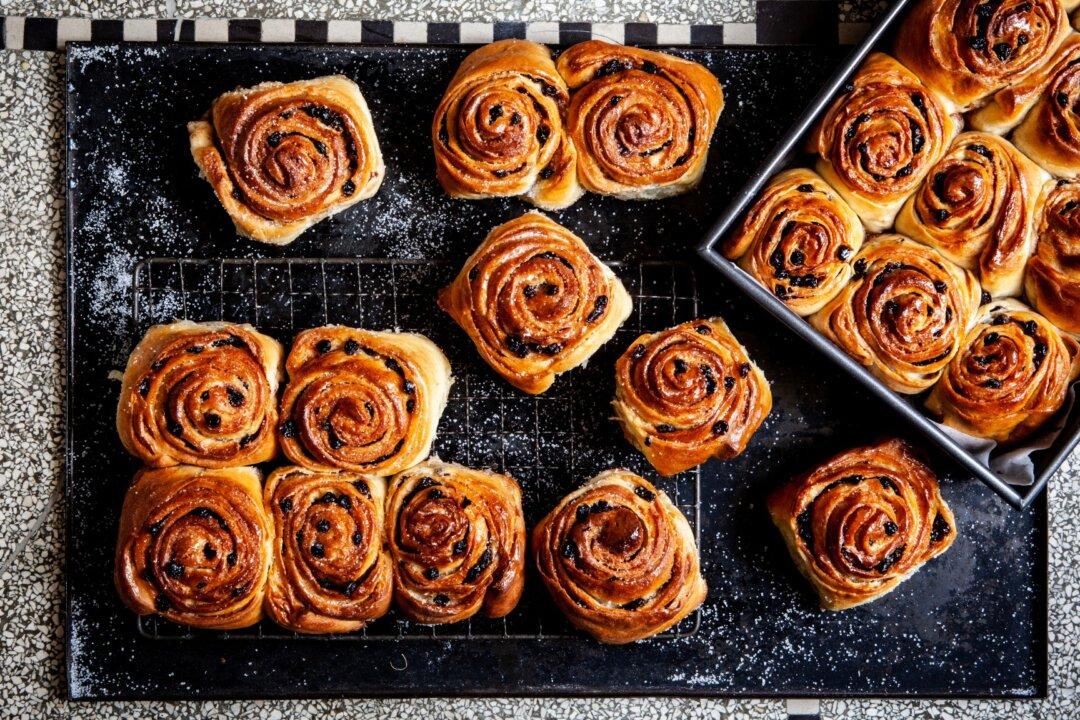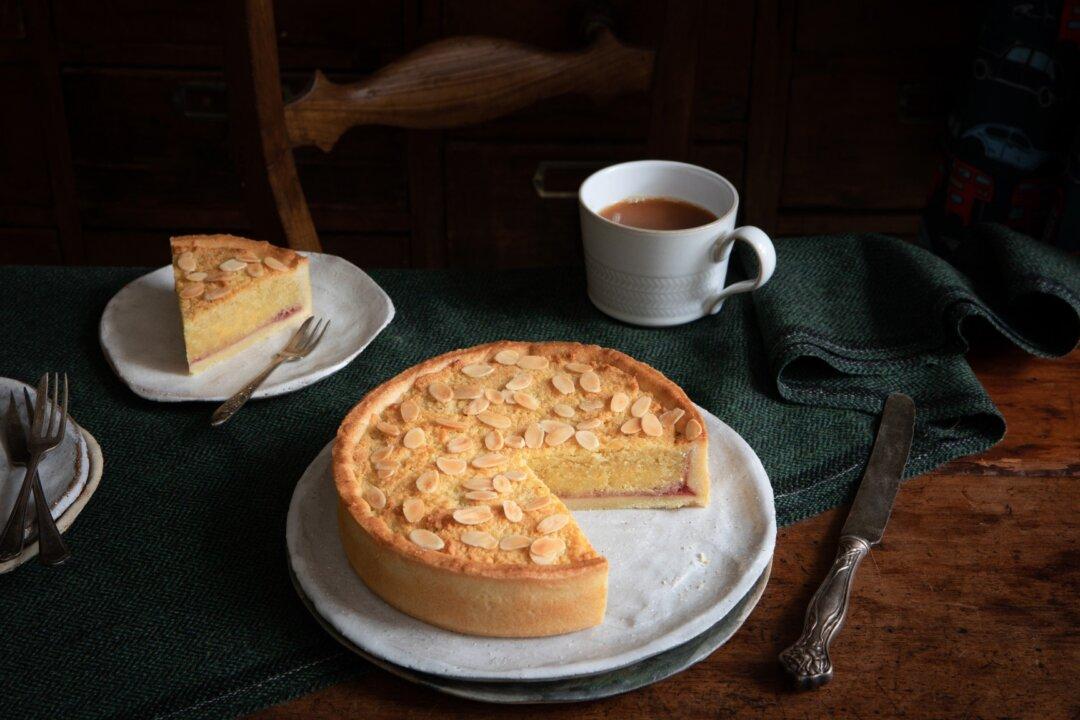Chelsea buns were sold in The Chelsea Bun House in London as far back as 1711. They may be considered the first sweet confection that people ever queued for in masses, just to get their hands on a bun or two. It might not be as modern as a cronut or a freakshake, but the Chelsea bun managed to live through the ages without being forgotten along the way. Today it is still the bun you see most frequently sold in British bakeries, although it’s getting some competition from the Scandinavian cinnamon bun.
Chelsea buns are made from a rich yeast dough and must have a square shape, with a circular spiral dotted with currants. The pleasure of unrolling them while you eat them and tearing the dough is addictive. The size of the baking tins is important to ensure that the buns touch one another and push each other into a square shape. The trick to making the best Chelsea bun is to roll out the pastry as thinly as you can manage.



